The Resolution of Vectors
Introduction
⇒ The following image shows a passenger puling his bag at an airport - he pulls the bag with a force (N), which helps pull the bag forward and up
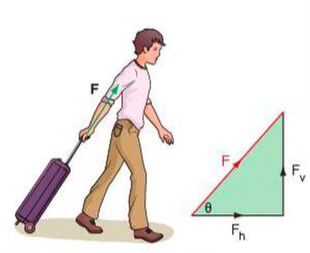
⇒ The force (F) can be resolved into two components: a horizontal component (Fh) and a vertical component (Fv)
⇒ Using the law of trigonometry:
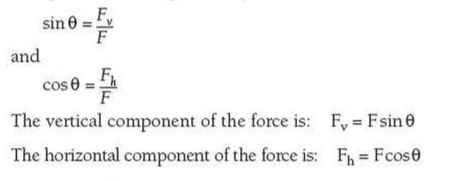
An Inclined Plane
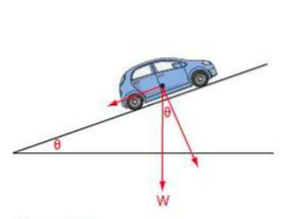
⇒ This shows a car at rest on a slope
⇒ The weight of the car acts vertically downards, but here it is useful to resolve the weight in directions parallel and perpendicular to the road
⇒ The component of the weight parallel to the road, for example (i.e. the arrow pointing down the slope behind the car), provides a force to accelerate the car downhill
⇒ The component of the weight acting along the slope is:

⇒ The component of the weight acting perpendicular to the slope is:

Forces in Equilibrium

⇒ This shows a motorcyclist with a weight of 800N and the bike ways 2500N - a total of 3000N
⇒ These forces are balanced by the total contact forces exerted by the road (i.e. under the wheels), meaning the bike is at rest
- This demonstrates Newton's first law of motion
⇒ Newton's first law of motion also applies to the car on the slope too, even though the forces do not all act in a straight line
- This is because the vector sum of all the forces must still be zero
- Three forces act on the car: its weight (W), a normal reaction perpendicular to the road (N), and a frictional force (F) parallel to the road
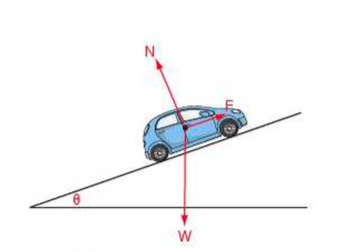
⇒ The triangle of forces show that these three forces (W, N and F) add up to zero, so there is no resultant force to accelerate the car
⇒ We can also explain why there is no resolutant force by resolving the forces along and perpendicular to the plane:
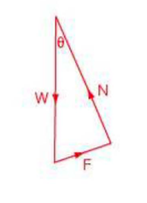

⇒ So the two components of the weight are balanced by friction and the normal reaction
Extra
⇒ Also see our notes on: